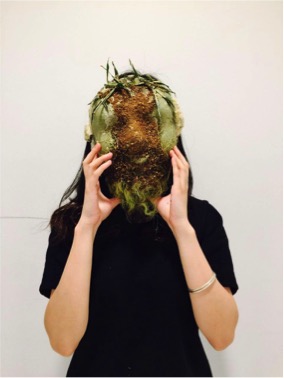Launched by ADHT’s Insights, First Year Features is a multi-part series that aims to showcase the work produced by students currently enrolled in Parsons’ First-Year Program. Challenging the ways in which making and writing come together in and out of studio, seminar and socially aware spaces, students offer multiple entry points into the task of art and design, and how design engages in our complex and rapidly changing world.
For the inaugural installment of First Year Features, we have the work of students Xiaoxuan Fu, James Shih, and Qihan Dong from Jamie Kruse’s Sustainable Systems course.
Sustainable Systems introduces and prepares first-year Parsons students to work within the realm of “wicked problems.” This course is a combination of sequenced field trips to locations around New York City, lectures, fieldwork, and applied scientific methods. The course encourages students to develop creative skills that support diversity, adaptability, and resilience in the face of ever-changing conditions.
In Jamie Kruse’s LS section of Sustainable Systems Summer 2015 class, students created “Masks for the Anthropocene,” asking how can designing, making, and performing a mask bring awareness to issues related to environmental change. How can a mask alter the behavior of those who use/wear it? Who might people become when they wear the mask? Below are three final works that came out of “Masks for the Anthopocene” that push these questions open, in the context of the classroom, the context of their own documentation, and within the context of these larger cultural questions. Each student provides their own insight into their work, and their process.
Xiaoxuan Fu’s “Dragon Tree Mask”

“My mask is based on one of the plant-endangered species named Dragon Tree. Dragon Trees grow in Africa and southern Asia, but due to climate change, they are facing the problem of extinction. In order to make an eco-friendly project, I used green tea, rice tea, flour, sweat flour, and corn tassel. As green tea is also an endangered species, I used it to make the mask base. By using these materials, I reenact the Dragon Tree’s shape, and used corn tassel to create the root of the tree. When people wear it, the green tea smell is very strong. I think this project can provide a space to feel if you were the Dragon Tree, what would you feel? This is a chance to let people know about the endangered species and think of the environmental issues as well as get a sense to protect them.”
James Shih’s “Sixth Extinction Gas Mask”

“The core concept of the mask is to show people what our lives would be like during the Sixth Extinction. The increasing greenhouse gas emissions and pollution will raise the temperature on our planet, creating a poisonous and unsuitable environment for us to live in. We will wear gas masks as a result of damaging the planet’s environment. By making the mask in a deformed and horrifying shape, my intention is to show the public that we are at the edge of the Sixth Extinction and it is not a ‘cool’ or exciting event that we can enjoy or brag about. The mask is a symbol of ugliness and awfulness. It is a mask that you would never want to put on.”
Qihan Dong’s “Mask for the Anthropocene”

“I wanted to create a calming and totally natural mini-environment that ‘filters’ out the overwhelming experience of the city. I chose materials that are environmentally-friendly, such as tree branches, real plants, and cotton. The activation of the mask invites people to slow down and to really observe the changes caused by time and humans. By observing the mask itself and its surroundings, my audience would experience the contrast of how the plants are killed by time; meanwhile the buildings become taller. Everything in the city is designed and built up by humans, but we often overlook the changes we have caused to our environment.”
All work featured here is done so with the consent of their makers.
This installment was created by Alex Bennett.


























